MPC/Airfix 1/72 Do17E Conversion to a Do17V-1
By Allan Wanta
History

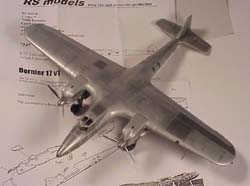 The fledgling Luftwaffe was looking for aircraft to fill the many needs of its rebuilding. Fortunately the passenger restricted Do-17 airliner rejected by Lufthansa came to the attention of the RLM by pure luck. What surely would have been a terribly cramped passenger plane was highly regarded by the test pilots that flew it in late 1937. Its high speed astonished the crowds that gathered at International airshows of the time. The militarization of this sleek plane came at a cost of lower speeds, which was its only defense.
The fledgling Luftwaffe was looking for aircraft to fill the many needs of its rebuilding. Fortunately the passenger restricted Do-17 airliner rejected by Lufthansa came to the attention of the RLM by pure luck. What surely would have been a terribly cramped passenger plane was highly regarded by the test pilots that flew it in late 1937. Its high speed astonished the crowds that gathered at International airshows of the time. The militarization of this sleek plane came at a cost of lower speeds, which was its only defense.
The Kit
We've all had this kit at one time or another; it's like having chicken pox or the flu. Perhaps not that bad, and in actuality, this kit has stood the test of time quite well. It was surprising to find the MPC version of this kit was virtually free of flash, and apart from some raised panel lines, had very nice surface features. The RS Resin conversion is the animal we have to tackle in order to backdate the Do-17E/F to the original V-1 model. The conversion itself is fairly simple and the pieces are up to RS's usual quality. The hardest part of this kit has got to be the use of metallic paints to represent the unpainted plane as it was rolled out.
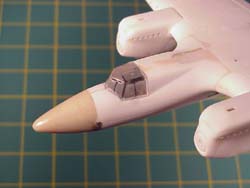 |
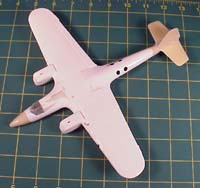 |
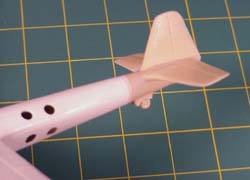 |
The first task at hand was drilling four holes that are the windows for the passengers, having measured the needed holes; they are made to 4mm in diameter. The instructions are very clear as to where to cut and drill the donor kit. The tail was lopped off to accept the new single rudder and tailplanes. Lastly the nose was modified for the sharp tapered nose cone. A modest interior was used, no resin, just some plastic card and kit parts. The entire kit was assembled according to the instructions, sans the wheels, which are horrible little donut things and best replaced with the True Details wheels. A few of the raised rivets and lines are lightly sanded down, but most of the surfaces are engraved anyway.
 |
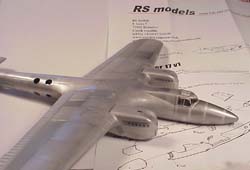 |
 |
Think 1937 when you do a conversion like this, think of sleek, sexy, speed. Think of no camouflage, yikes! The 'Flying Pencil' was rolled out of the hanger with nothing but a smile, no markings or anything to ruin the lines and appearance. This was a lesson in using metallic paints 101. The entire kit went together without much ado, masking and spraying Testors metallic was not that big of a deal either. The hard part was knowing when to stop making different shaded panels and say enough is enough.
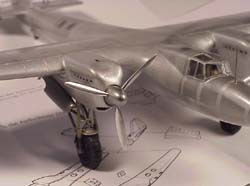 |
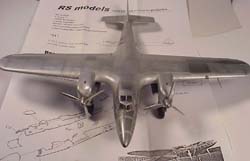 |
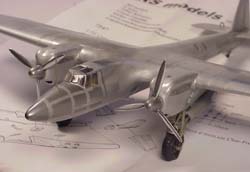 |

